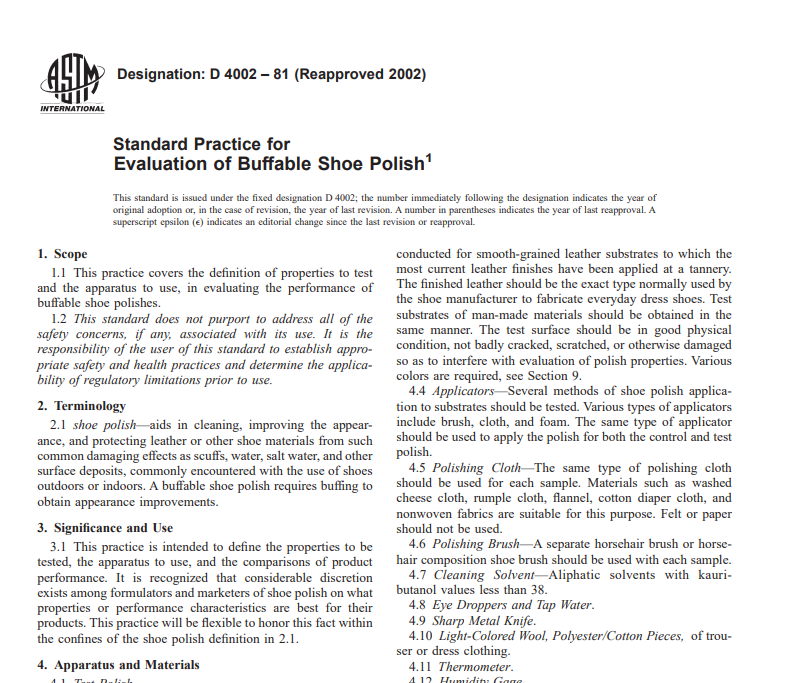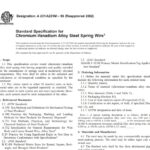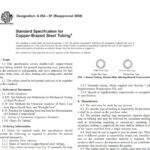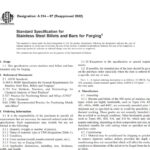Standard Practice for
Evaluation of Buffable Shoe Polish1
This standard is issued under the fixed designation D 4002; the number immediately following the designation indicates the year of
original adoption or, in the case of revision, the year of the last revision. A number in parentheses indicates the year of last reapproval. A
superscript epsilon (e) indicates an editorial change since the last revision or reapproval.
1. Scope
1.1 This practice covers the definition of properties to test
and the apparatus to use, in evaluating the performance of
buffable shoe polishes.
1.2 This standard does not purport to address all of the
safety concerns, if any, associated with its use. It is the
responsibility of the user of this standard to establish appropriate safety and health practices and determine the applicability of regulatory limitations prior to use.
2. Terminology
2.1 shoe polish—aids in cleaning, improving the appearance, and protecting leather or other shoe materials from such
common damaging effects as scuffs, water, salt water, and other
surface deposits, commonly encountered with the use of shoes
outdoors or indoors. A buffable shoe polish requires buffing to
obtain appearance improvements.
3. Significance and Use
3.1 This practice is intended to define the properties to be
tested, the apparatus to use, and the comparisons of product
performance. It is recognized that considerable discretion
exists among formulators and marketers of shoe polish on what
properties or performance characteristics are best for their
products. This practice will be flexible to honor this fact within
the confines of the shoe polish definition in 2.1.
4. Apparatus and Materials
4.1 Test Polish.
4.2 Control Polish—The control polish is selected subjectively for comparison to the test polish. It may be a competitive
product, a modified formulation of the test polish, etc. The one
stipulation is that the control polish is of the same or similar
type as the test polish. For example, if the test polish is an
aerosol-emulsion polish, the control should be an aerosol emulsion polish. It would not be meaningful to select a paste or
liquid product as a control for comparison to an aerosol emulsion test polish.
4.3 Test Substrates—The test substrate should be one for
which the test polish is intended. Separate tests should be
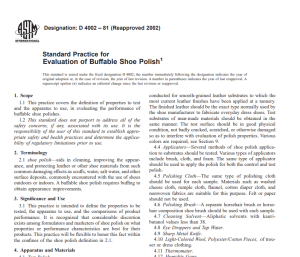
Click below to download Astm D 4002 – 81 (Reapproved 2002) pdf free
Click here to download Astm D 4001 – 93 (Reapproved 1999) Pdf Free Download
